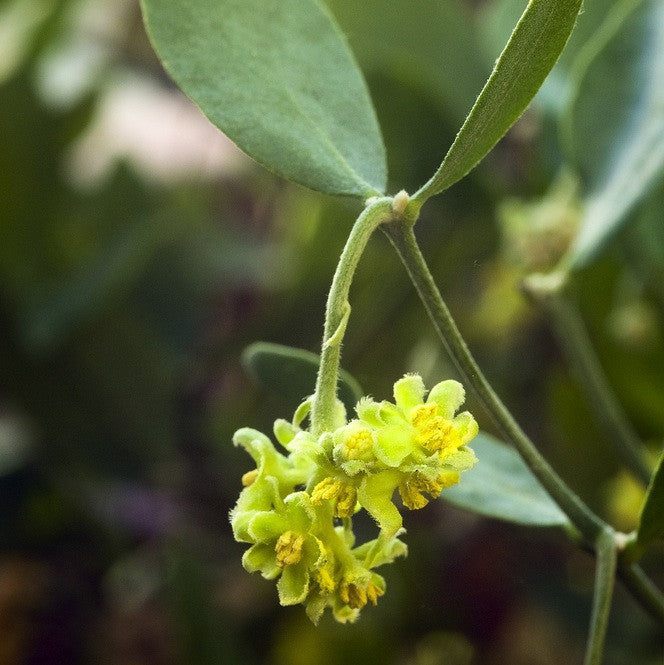TIMELESS Essential Oils
Jojoba, Organic, Golden
Couldn't load pickup availability
SALE : 20% OFF
Pure, Golden Jojoba Oil, Organically Grown
Product Details
Botanical name : Simmondsia chinensis
Extraction method / Source : Cold Pressed / Beans
Key constituents : 11-Eicosenoic Acid, Euricic Acid, Oleic Acid
Plant description : Botanical family: Simmondsiaceae
Indigenous to the Southwestern North American deserts, the Jojoba plant is now cultivated in many arid areas worldwide. It grows to a height of 3 – 6 feet and produces thick, waxy grey-green leaves and small green-yellow flowers. The fruits are hard acorn-shaped beans with liquid wax (oil) centers. The Jojoba plant is alternately known as Goat Nut, Deer Nut, Pignut, Wild Hazel, Quinine Nut, Grey Box Bush and Coffeeberry. The beans provide food for many animals.
Regions of Production : Israel
Growing Practices : Organically farmed. Plants are tested after harvest for purity.
History / Fun Facts : Native Americans of the Southwest traditionally used Jojoba beans to make salves for softening the skin, healing wounds and preserving animal hides.
Properties
Characteristics : Rich texture, golden color, mild scent, non-greasy
Properties : Anti-fungal, anti-inflammatory, antioxidant, emollient, does not become rancid
Uses : Pure Golden Jojoba Oil is similar to the skin's own oils, so is quickly absorbed and a highly effective moisturizer for dry, mature skin and nails. Nourishes and helps control oily scalp and skin, so is a popular ingredient in natural shampoos and conditioners. Good for all skin types, and a very useful oil for the treatment of acne. Jojoba oil is used in many pharmaceutical compounds in the USA, and is a popular oil for cosmetics and aromatherapy applications.
Storage : Store in a cool, dry place away from direct light. Refrigeration prolongs the freshness of all natural oils.
Safety
Safety : Non toxic, non-allergenic
Notice : This information is for educational purposes only. It has not been evaluated by the US Food and Drug Administration. It is not intended to diagnose, treat, cure or prevent any condition or disease and should not take the place of evaluation by a qualified health professional. Although we strive to provide information which is accurate and up to date, we cannot guarantee the accuracy or completeness of this information.
References
References
Althea Press, Essential Oils: Natural Remedies, 2015. Althea Press, Berkeley, CA.
Battaglia, Salvatore, The Complete Guide to Aromatherapy, Second Edition, 2003. The International Centre of Holistic Aromatherapy, Brisbane, Australia
Hampton, Aubrey, Natural and Organic Hair and Skin Care, 1987. Organica Press, Tampa, FL.
Schnaubelt, Kurt, The Healing Intelligence of Essential Oils: The Science of Aromatherapy, 2011. Healing Arts Press, Rochester, VT.


